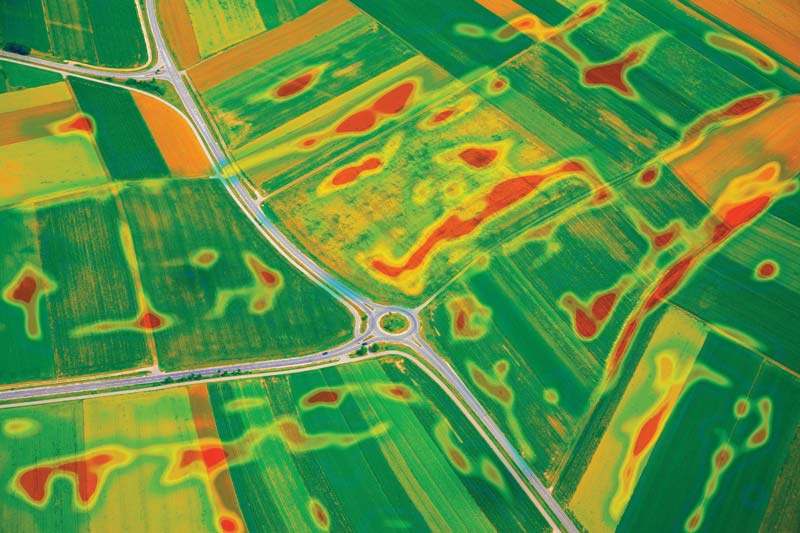Multispectral Remote Sensing
Multispectral sensing and imaging deliver deeper and more frequent data that helps farmers and agronomists make decisions that improve crop yield and field productivity by:
- Early detection of crop stress and moisture
- Variable rate nutrient and water application
- Visualizing crop health and vigor with NDVI and more
- Improving the frequency, locale and resolution of data from ground, air, and space
OEM Multispectral Sensing Tools
Salvo Coatings provides spectral filters, sensors and cameras that capture valuable multispectral data.
- PixelCam™ multispectral cameras image multiple color and infrared wavelengths in real-time on a single sensor on moving ground, air, and space platforms
- PixelSensor™ multispectral sensors capture spectral and vegetation index data at high rates for continuous monitoring and analysis
- OEM filter arrays and assemblies can adapt conventional monochrome sensors and cameras to high-value multispectral devices, with virtually no change in size, weight, or power (SWaP) requirements
Multispectral Sensing | Visible + NIR Wavelengths
Healthy plants strongly absorb blue and red light, and strongly reflect NIR light. NIR light has optical wavelengths beyond our human vision but is still visible to multispectral cameras. By detecting the light reflected by plants, Salvo Coatings’ multispectral imagers can differentiate healthy plants from unhealthy or stressed plants before our eyes or a color camera can.
NDVI & Beyond | Vegetation Indices
Scientists and agronomists have been using multispectral data from satellites for decades – using vegetation indices to highlight a particular characteristic of vegetation calculated from combination of the reflectance at two or more wavelengths. The most common is the Normalized Differential Vegetation Index (NDVI) which measures the difference between the light reflected at NIR wavelengths and visible wavelengths. There are many other indices used to reveal other aspects of crop health, vigor, or stress such as moisture stress, water content, nitrogen content, and other crop-specific variables. Other indices and spectral measurements are used to reveal food quality and safety including:
- Ripeness and bruising
- Quality grading and sorting
- Pathogens and contaminants
- Non-destructive, non-invasive inspection

